Mandana Saebi
A Discriminative Entity-Aware Language Model for Virtual Assistants
Jun 21, 2021
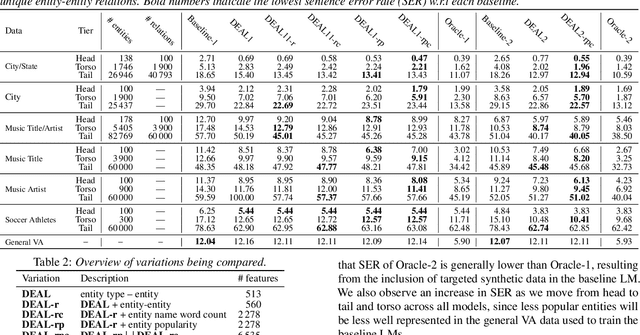
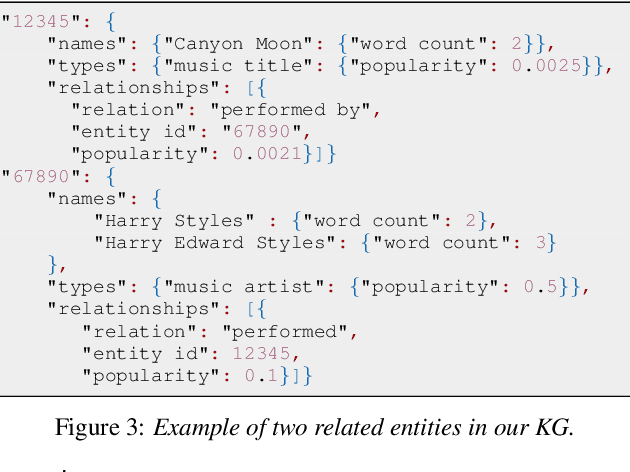
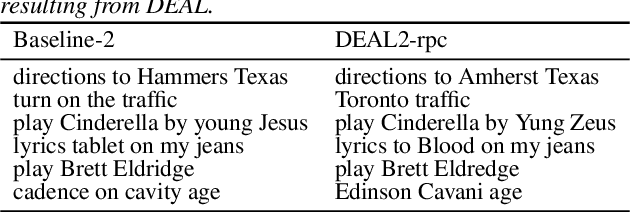
Abstract:High-quality automatic speech recognition (ASR) is essential for virtual assistants (VAs) to work well. However, ASR often performs poorly on VA requests containing named entities. In this work, we start from the observation that many ASR errors on named entities are inconsistent with real-world knowledge. We extend previous discriminative n-gram language modeling approaches to incorporate real-world knowledge from a Knowledge Graph (KG), using features that capture entity type-entity and entity-entity relationships. We apply our model through an efficient lattice rescoring process, achieving relative sentence error rate reductions of more than 25% on some synthesized test sets covering less popular entities, with minimal degradation on a uniformly sampled VA test set.
Heterogeneous Relational Reasoning in Knowledge Graphs with Reinforcement Learning
Mar 12, 2020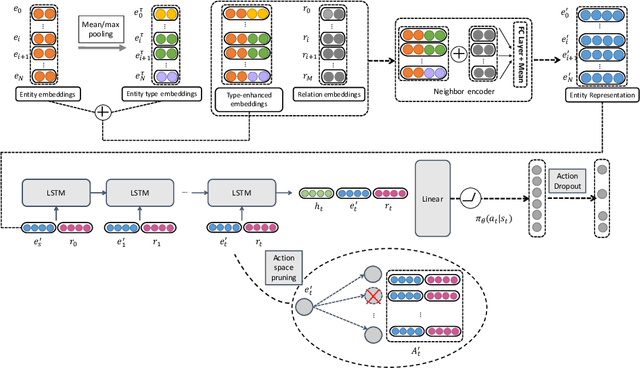

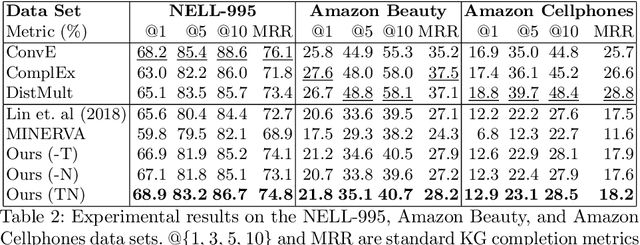
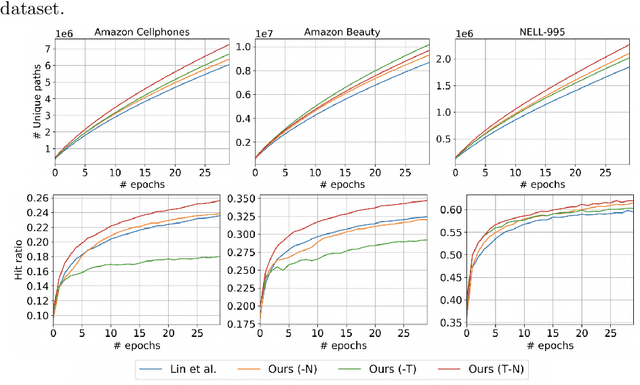
Abstract:Path-based relational reasoning over knowledge graphs has become increasingly popular due to a variety of downstream applications such as question answering in dialogue systems, fact prediction, and recommender systems. In recent years, reinforcement learning (RL) has provided solutions that are more interpretable and explainable than other deep learning models. However, these solutions still face several challenges, including large action space for the RL agent and accurate representation of entity neighborhood structure. We address these problems by introducing a type-enhanced RL agent that uses the local neighborhood information for efficient path-based reasoning over knowledge graphs. Our solution uses graph neural network (GNN) for encoding the neighborhood information and utilizes entity types to prune the action space. Experiments on real-world dataset show that our method outperforms state-of-the-art RL methods and discovers more novel paths during the training procedure.
HONEM: Network Embedding Using Higher-Order Patterns in Sequential Data
Aug 15, 2019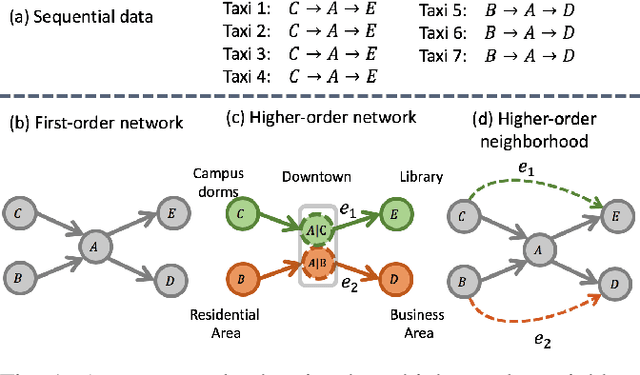
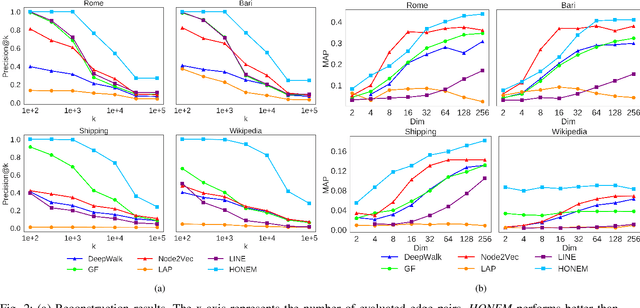
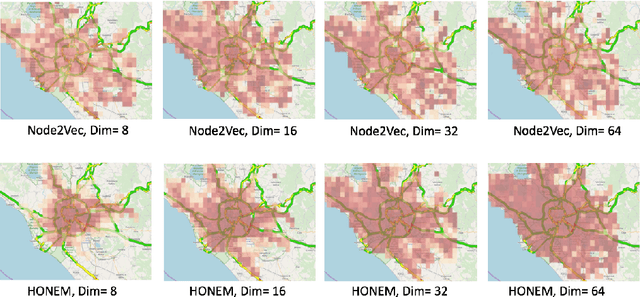
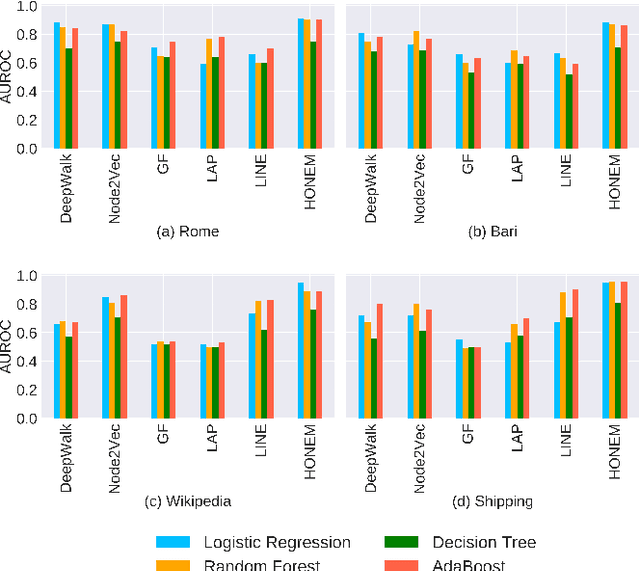
Abstract:Representation learning offers a powerful alternative to the oft painstaking process of manual feature engineering, and as a result, has enjoyed considerable success in recent years. This success is especially striking in the context of graph mining, since networks can take advantage of vast troves of sequential data to encode information about interactions between entities of interest. But how do we learn embeddings on networks that have higher-order and sequential dependencies? Existing network embedding methods naively assume the Markovian property (first-order dependency) for node interactions, which may not capture the time-dependent and longer-range underlying complex interactions of the raw data. To address the limitation of current methods, we propose a network embedding method for higher-order networks (HON). We demonstrate that the higher-order network embedding (HONEM) method is able to extract higher-order dependencies from HON to construct the higher-order neighborhood matrix of the network, while existing methods are not able to capture these higher-order dependencies. We show that our method outperforms other state-of-the-art methods in node classification, network reconstruction, link prediction, and visualization.
 Add to Chrome
Add to Chrome Add to Firefox
Add to Firefox Add to Edge
Add to Edge